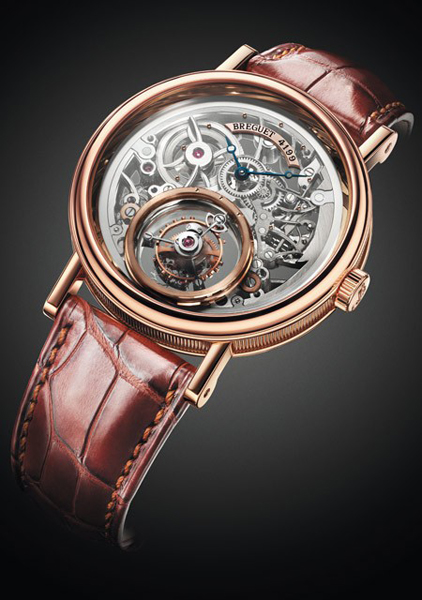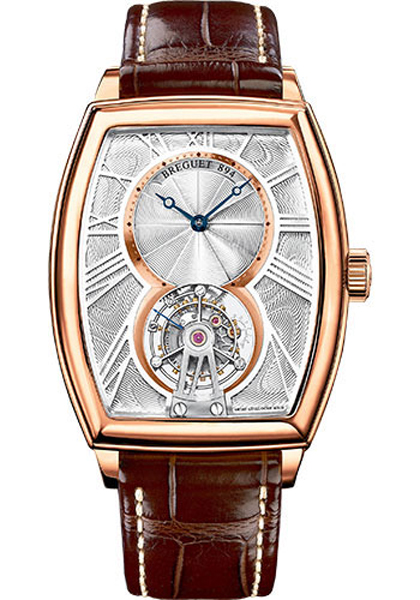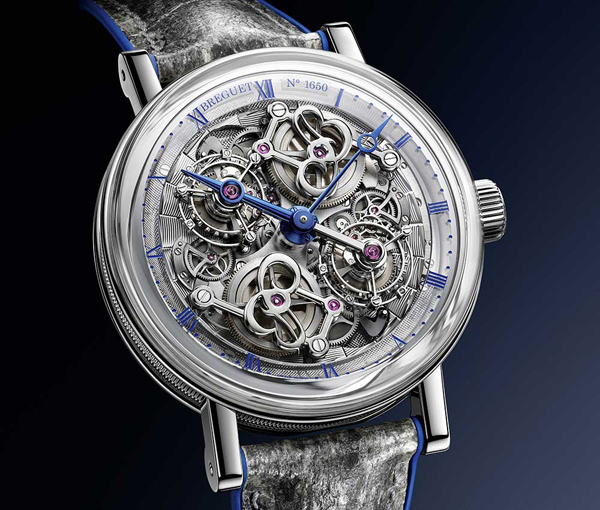The tourbillon, as it rotates endlessly around its own axis, is a visual representation of the passage of time. The sight is gently hypnotic, in a way that no other watch mechanism or complication can match. Often described as a heart that beats infinitely – and incredibly fast – the tourbillon dances around in its own eternal waltz. And yet its primary function was not to provoke wonder at its micromechanical mastery, or to induce a trance. The tourbillon is the product of a prodigious intellect and exceptionally skilful hands. Its inventor, Abraham-Louis Breguet, originally created it to improve the precision of mechanical movements. By making the regulator (the oscillator and escapement) revolve around its own axis by means of a mobile cage, the mechanism smooths out any disruptions that a watch movement may undergo as a result of gravity, inadequate lubrication or any other infinitesimal defects in the mechanism. This improves regularity and precision.
Patented by Abraham-Louis Breguet in 1801, the tourbillon is a treasure of the watchmaking world, and has been the subject of major contemporary interpretations by the eponymous watch brand. The story is best told with the help of some spectacular examples.
In 2007, Breguet unveiled the Tourbillon Messidor 5335. Wait, is something missing? The tourbillon appears to be floating in mid-air. Breguet achieved this visual illusion by placing the cage inside a sapphire construction. The idea has been patented.

The following year, the Heritage Tourbillon 5497 dared to use the tonneau shape for the case. The movement inside mirrors this form. Located at 6 o’clock on this distinctive timepiece, the tourbillon bridge plays a dual role. Carved into a Roman numeral VI, it is part of the chapter ring while securing the tourbillon cage at the same time.

The Tradition Tourbillon Fusée 7047, launched in 2010, made quite an impression. On this highly contemporary watch, whose design elements mirror the shapes and three-dimensionality of pieces signed by Breguet himself, the tourbillon takes up as much room as the dial. Because of its size and visibility, it leaves the observer in no doubt that this is a serious time-keeping instrument.

In 2018, the Classique Tourbillon Extra-plat Automatique 5367 showcased its tourbillon in exquisite livery. Placed slightly off-centre at 5 o’clock, it is held by a horizontal bridge that overlaps the ivory-coloured grand feu enamel dial. This tourbillon is part of an exceptionally thin movement, measuring just 3 mm deep! An automatic winding mechanism is the finishing touch of this exquisitely refined watch.

2020 marked the return of a spectacular movement launched in 2006 with the reference 5347: the Classique Double Tourbillon 5345 “Quai de l’Horloge”. Two tourbillons, placed exactly opposite each other, beat in unison, while the baseplate rotates the entire movement once every 12 hours.

These tourbillons are stylistic exercises on a prestigious theme; they continue to push the boundaries of a technical invention that many believed had reached the pinnacle of perfection two centuries ago. Indeed, this complex mechanism is the embodiment of the enduring fascination that haute horlogerie continues to inspire today.







